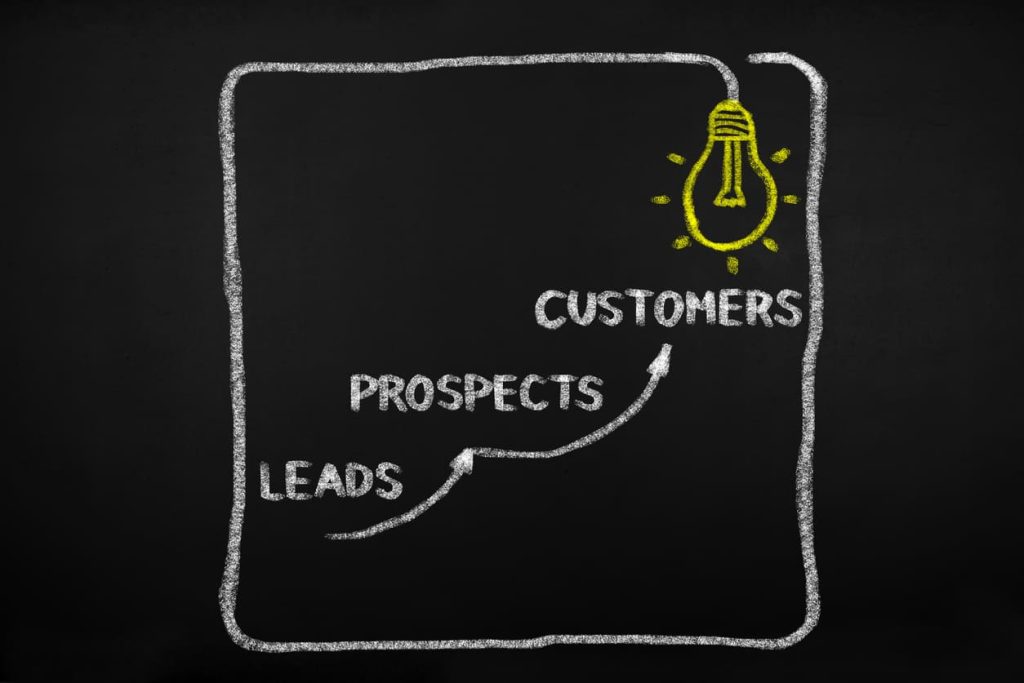

Storytelling instead of facts: Companies now invest a lot of time and budget in high-quality content marketing. Because good content can help generate valuable leads – and ultimately motivate potential customers to buy. How do you do that? You can find out here.
Leads are one of the most valuable currencies in digital marketing and therefore also relevant in content marketing. The goal is to turn interested visitors into fans of the brand and satisfied customers. It is important to focus on potential customers (customer centricity) and to create emotional touchpoints along the customer journey (customer relationship management). Sounds simple enough, you might think at this point. People, however, are complex – and meeting them emotionally is one of the biggest challenges in marketing. But that doesn’t stop us, of course!
Lead generation is the process of acquiring high-quality data from potential customers. Lead generation is therefore part of the sales and marketing strategy. It includes all measures that are taken to draw users’ attention to the products and services of a company. Accordingly, a lead is any person who expresses interest in a company’s products or services. But that’s all (yet). So first and foremost, we want to generate strategic data sets. Or more simply: we want potential (new) customers to voluntarily give us their contact details. And why do we want that? Because every lead is a potential conversion.
It’s usually like this: before I order from a new online shop, I subscribe to the newsletter for a 10 % discount. To educate myself, I ask for a free e-book to be sent to me. To improve my yoga practice, I sign up for a free webinar.
I have not bought anything from any of these companies. And yet I am valuable to them: I am now a lead for each of these companies, because I have expressed interest in their services – and they have my email address. Many people feel the same way I do: Today more than ever, prospects and potential customers need and want to be convinced with information, (financial) incentives and emotional touchpoints. Content marketing can combine both requirements and transport both information and emotions to generate leads in the end. And what is the best way to do that? With excellent value-added content, high-quality content, an emotional user experience and, above all, strong call-to-actions (CTAs). But shouldn’t people just buy, buy, buy? Or even: Why do we need leads?

Many purchase decisions are preceded by a (qualified) lead. And this is not only true for cost-intensive purchases. Digitalisation and the methodological shift in marketing (information and emotions instead of pure advertising and sales promotion) have had a lasting impact on purchasing behaviour and the buyer’s journey. Therefore, it is all the more important that content marketing concepts can fully unfold their effect – for this, the content must be produced and distributed precisely to the target group. A plan- and strategy-less shot in the dark is at best a zero-sum game – and at worst senselessly wasted money. Therefore, it is important for companies to identify focus groups and personas (e.g. on the basis of demographic data or target group behaviour) as well as suitable lead sources.
We now know what lead generation is and why we want to generate leads in the first place. And how do we do that? By making valuable and free content available to interested parties. This can be so-called lead magnets (also called freebies) such as webinars, guides, e-books, checklists, whitepapers, vouchers, newsletters or landing pages. These lead magnets can also be called lead hurdles: Users have to overcome a hurdle (e.g. enter their email address) to receive their freebie.
Important: Not only the incentive must be of high quality! If my website is filled with uninspiring content, even a high-quality e-book is of no use to me. Because if my website does not convey quality or professionalism to the users, they will hardly give up their email addresses to receive a potentially bad e-book without added value.
Although leads are no guarantee that people will actually buy a product or use a service, as a company you still have a foot in the door. After all, a lead shows a basic interest in the brand and its offerings. And when we generate qualified leads, it’s more than just data collection. The information we collect helps us to better understand our prospects and their wishes, needs and challenges. Especially in terms of customer lifetime value (CLV) – a metric that also includes the future value of customers – leads are very valuable: if we know our customers and make them relevant offers that fit their interests and life stages, they are more likely to remain loyal customers in the long run.
Content marketing is an excellent way to generate quality leads. It is important to convince potential customers with high-quality content and to offer them real added value. After all, our leads “pay” with their data – so they should receive a corresponding value. Leads are not a guaranteed conversion, but if we generate and maintain them in a systematic and sustainable way, they are an essential first step on the way to a long-term and good customer relationship.